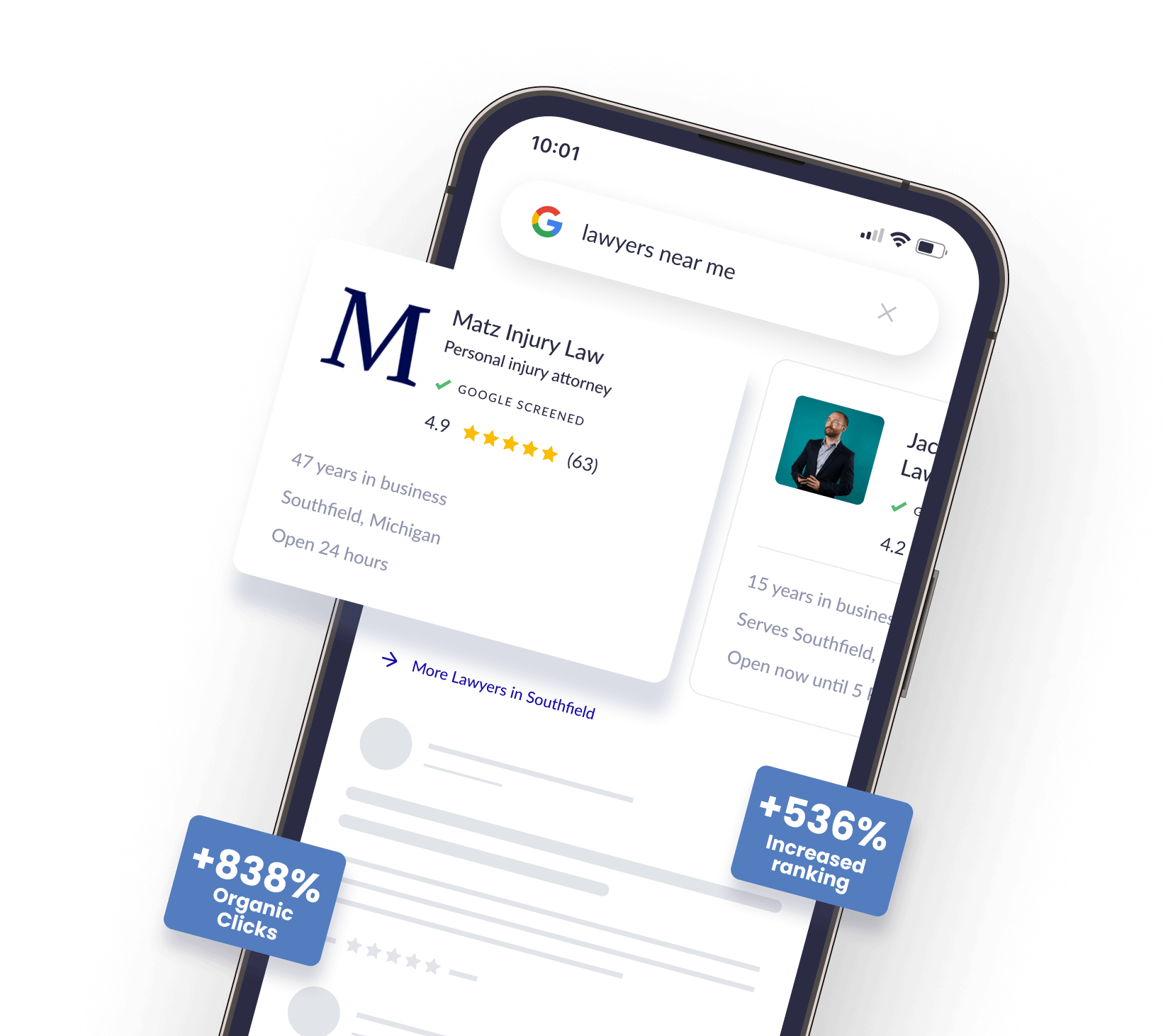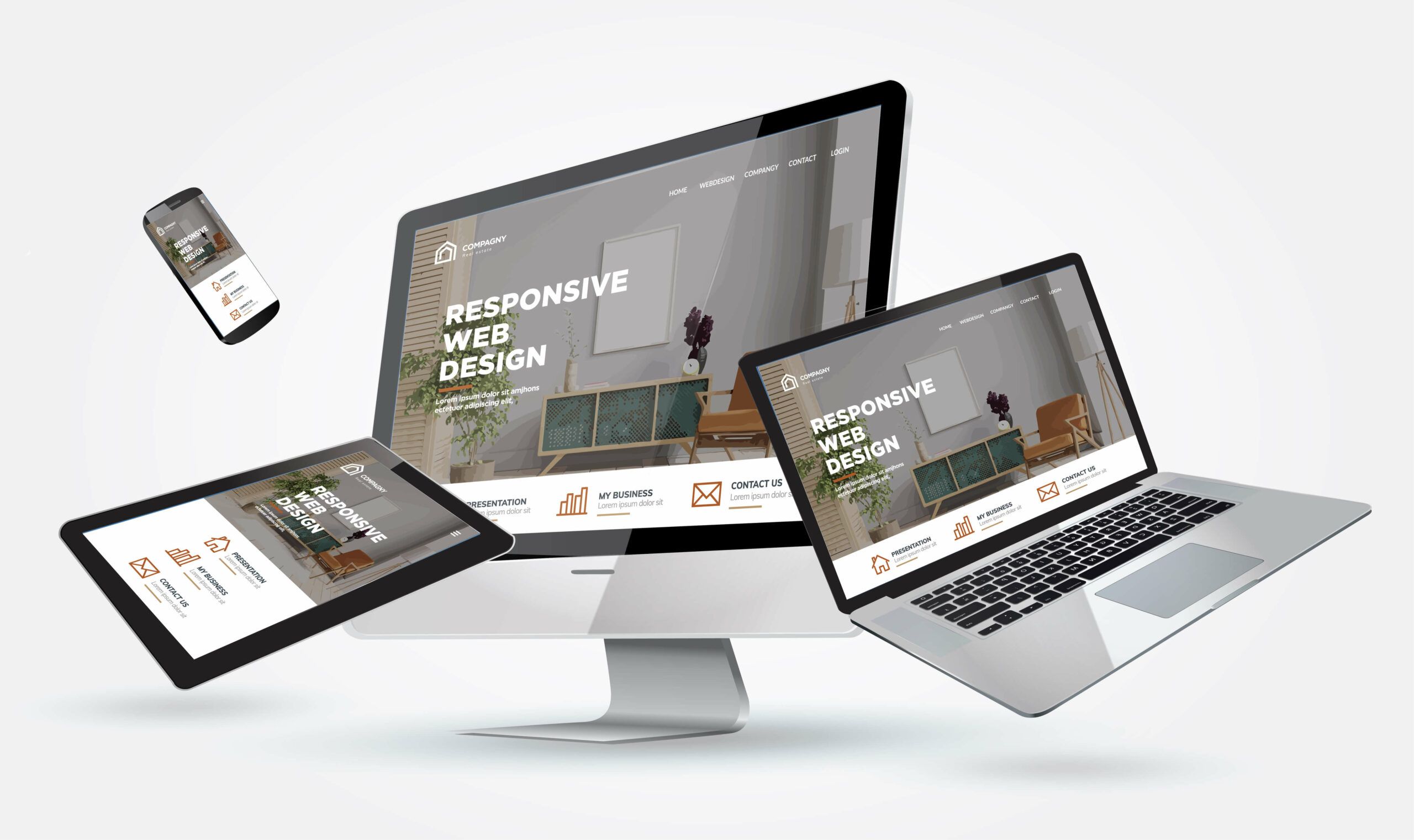
Key Takeaways:
- Google’s E-E-A-T standards put pressure on law firm websites to provide high-quality content in a reliable, easy-to-read fashion.
- You cannot build a website just for ranking. You also cannot build a website just for readers.
- This guide includes the steps you need to take to create a website that gets recognized by Google and supports your would-be clients.
- Array Digital offers high-quality website design services that you need to rank as an attorney. In today’s competitive legal landscape, a quality website is not just an option — it’s a necessity.
A well-designed website is the cornerstone of your online presence, significantly influencing client acquisition and professional reputation. To truly distinguish yourself, it’s essential to focus on experience, expertise, authoritativeness, and trustworthiness (E-E-A-T). When you follow this approach, your website not only appeals visually to prospective clients but also meets the stringent requirements of search engines like Google. By strategically blending aesthetics with functionality, content richness, and technical SEO, your legal website can become a powerful tool for conveying your legal experience and winning trust in an increasingly crowded marketplace.
We lay out some of our best advice for creating a law firm website that stands out from the crowd and gets clients in the door.
What is E-E-A-T? Why does it matter for law firm websites?

Google expects exceptional content on law firm websites that is accurate and descriptive. It holds attorneys to a much higher standard because the information you provide on your site can profoundly impact the money and lives of your readers. One way Google does this is by applying its E-E-A-T standard to your website.
E-E-A-T is not a specific ranking factor. Rather, it is a term used to describe how Google’s automated ranking process evaluates the quality of a website’s content based on four factors: experience, expertise, authoritativeness, and trustworthiness. Google does not know your firm, and it can only base ranking decisions on the quality of your website. Google rewards sites that create helpful content.
Your website must follow E-E-A-T standards and operate efficiently and effectively to rank competitively on search engines.
If your website does not communicate these high standards, Google will not rank it high on the search engine rankings pages (SERPs), which means potential clients will not find your site.
Essential elements in a law firm website design
Several factors contribute to building a well-respected, high-ranking website.
View your website as a direct representation of the work you provide to your clients and your law firm’s online brand. To stand out, it needs an attractive, easy-to-use, and effectively optimized layout and design for users first and search engines second. To do that, focus on these elements:
Intuitive navigation
Website navigation is how people move through a website. Intuitive design enables a smooth flow from one page to the next, with a logical linking structure.
Take this user journey as an example:
- A client looking for a personal injury lawyer reaches your home page.
- They want help for a car accident. Your home page provides clear links to your car accident service page.
- The car accident service page leads to related pages for more information as well as your contact page.
A streamlined, easy-to-follow navigation like this helps people progress through the website, getting the information they need.
Consistent branding
Branding is a crucial part of your law firm’s identity, both on and offline. Each component of your website needs to communicate the same branding. This may include:
- Colors
- Logos
- The types of language
- The font on your website
- The types of images (authentic images always work best)
A consistent brand on every page of your site helps people to recognize your law firm. Your branding should also blend into your social media, LinkedIn, blogs, and other marketing efforts. Branding helps your law firm (and your website) come to mind when a person needs the services you offer.
Quick loading times
You will lose website visitors if your website takes more than a few seconds (think 2 seconds) to load. You rank right alongside your competition in the SERPs. If your site does not load quickly, the competitor is waiting.
Note, too, that load times relate to the website’s design. There are numerous backend strategies that your website designer can employ to improve page speed. However, you have to invest in good technical SEO built on a solid platform by skilled developers.
Responsive design
Your potential clients come from more than just a PC in an office. Many will find your site on their mobile device, whether a tablet or a smartphone. Responsive design means your site looks good and works well no matter what size device it’s on.
However, if you have not designed your website with a responsive design, it will not display correctly. Your potential clients are more likely to try a competitor’s site than to wrestle with a website that doesn’t work well on their phones.
In fact, Google will stop indexing websites that fail to display on mobile devices by July 5, 2024.
Note that all WordPress themes and templates are responsive. This is one reason our law firm web designers use WordPress as their preferred platform.
Essential pages on a law firm website

The next important step for your law firm website is providing the right content for visitors looking for information. You need individual pages dedicated to the most sought-after information.
Home page
Your home page is the most important branding tool for your website. It needs to give visitors everything they need to want to call you before they even scroll. Some core components of a home page include:
- Logo and tagline
- Calls to action
- Phone number
- Link to a contact page
- Contact form (usually at the bottom of the page)
- Chatbox features, if possible (but ensure that chatbox is not invasive)
- Intuitive navigational structure to the other pages of your site
- Clear, authentic images
Also, heavily consider showcasing social proof, such as incorporating case results and awards you’ve received, to help build trust.
Practice area pages
Each of your services should have its own practice area page, which should provide an overview of the information a person needs on that topic. All pages related to that practice area should link back to the practice area page. We call this the hub-and-spoke formula.
That means that your home page links to a practice area page. The practice area page can link to sub-pages that break down specific aspects of a topic (such as common car accident settlements or how to file a personal injury claim). This helps guide your website visitors as they click through your site for information. This format also makes it easier for search engines to index your pages.
Practice pages provide a wealth of information while encouraging the reader to act. They must be highly valuable content written for people first, then search engines.

Contact page
The contact page provides your website visitors with a way to immediately and easily contact you. Your contact page should include these core components:
- Your law firm name and address
- Phone numbers to reach you
- A Google Map that shows where your office is
- A list of the locations you serve
- A contact form where people can immediately request more information
About page
The about page is an excellent place to showcase your brand. It should answer the question, “Why should I trust this law firm with my problem?”
However, you cannot simply write an about page that looks like a resume.
To be successful, this page has to engage the reader and inform them about how you personally help people with their problems. It should help to humanize you to the reader and make your firm stand out from the competition. A quality about page should:
- Showcase each member of your team
- Provide information about awards and recognitions
- Outline the firm’s history and success rate
- Showcase Google reviews
- Incorporate client testimonials
Blog posts
The next component of your site is the backup support system: your blog.
Your blog supports website visitors who need more information. It also builds trust with your readers and provides fresh content to Google, encouraging Google to rank the site.
Blog posts help users by:
- Answering common questions that people ask online about the area of law
- Proving your authority on the topic
- Capturing users who are at different stages in the sales funnel (including those not yet looking for a lawyer but looking for answers)
Blog posts help you rank by:
- Providing internal linking opportunities to help strengthen the authority of your practice area pages
- Getting Google to index your site and evaluate the rankings of related pages
Testimonials
Testimonials are one of the most clicked-on pages on any law firm’s website. They provide authentic insight based on other peoples’ experiences with your firm. Any law firm can have a flashy website, but thoughtful reviews that talk about client experiences with your firm can help reassure potential clients that your firm is trustworthy.
WordPress is Google’s VIP platform
Google prefers WordPress as a website platform. That’s good news for you. This means that Google can easily navigate WordPress sites and rank them quickly.
Google prefers WordPress because:
- It’s mobile-friendly.
- It offers site structure and permalinks (which builds a strong architecture)
- WordPress’s metadata is easy to use.
More so, it’s user-friendly to you, as a lawyer creating a website, and the client looking for help.
Why law firms partner with Array Digital
Array Digital provides exceptional support to attorneys who want to rank on search engines to create consistent branding, increase website traffic, and grow their client base. We create custom strategies to help you stand out in a competitive industry.
Testimonials
“The entire team at Array Digital is amazing! They are incredibly knowledgeable and very quick to respond to their clients’ needs or concerns. If you are looking for a professional team to handle your website, I definitely recommend them!!!” — Donna T.
“Kevin and his team at Array Digital are true professionals and really know what they are doing. I highly recommend working with Kevin and his company. Also, check his podcast out as it is a great resource for all types of attorneys.” — Ben L.
A quality website is within your reach
Turn to Array Digital now to refresh, revitalize, and build a strong website presence on Google. We can help you get started. Call 757-333-3021 or fill out our contact form to learn more.
Everything You Need to Know About Hiring a Digital Marketing Agency:
- The four pillars of digital marketing
- Digital marketing options and costs
- The pitfalls to avoid
- What to expect when working with an agency
- The qualities to look for in a digital marketing agency

Related Website Design Articles





